The date is March 20, 2019. More than an hour before the game, fans are lined up in droves outside of McDonough Arena in preparation for an NIT showdown against the Harvard Crimson. Students marvel at the novelty of the large ESPN satellite truck parked in front of the southwest corner of the Arena and patiently wait for the doors to open. It may be a “Not-In-Tournament” game, but already you can feel that the atmosphere inside will be anything but apathetic.
As we walked into McDonough, I looked around the opening lobby, admiring its old-school ceramic tiles and classical ticket booths. The juxtaposition to previous games at Capital One Arena could not be more different. Students made their way to their seats on the west side of the court and got settled in for the exciting night ahead. The next couple of hours would end up being the best Georgetown basketball atmosphere I have ever experienced as a Georgetown student. This is not to take anything away from some other phenomenal games that have transpired over the last four years: the Providence double-overtime buzzer-beater as well as home wins against Syracuse and Villanova quickly come to mind. But this game just had an entirely different feel to it. The fatigue of taking a warm bus downtown and the sterility of a massive professional arena well below capacity were absent that night. We were all thankful that a home Washington Capitals game allowed the Hoyas to play on campus for the first time since 2014, and we all knew it could be a while before students would get an opportunity to see the men’s basketball team play in its historic home again.
Many Georgetown students that were lucky enough to be one of the 2,253 fans in attendance that night wish there were games on campus more often. The building was rocking from the tip until the final buzzer, despite the Hoyas losing to an Ivy League school in what many would consider an insignificant basketball game.
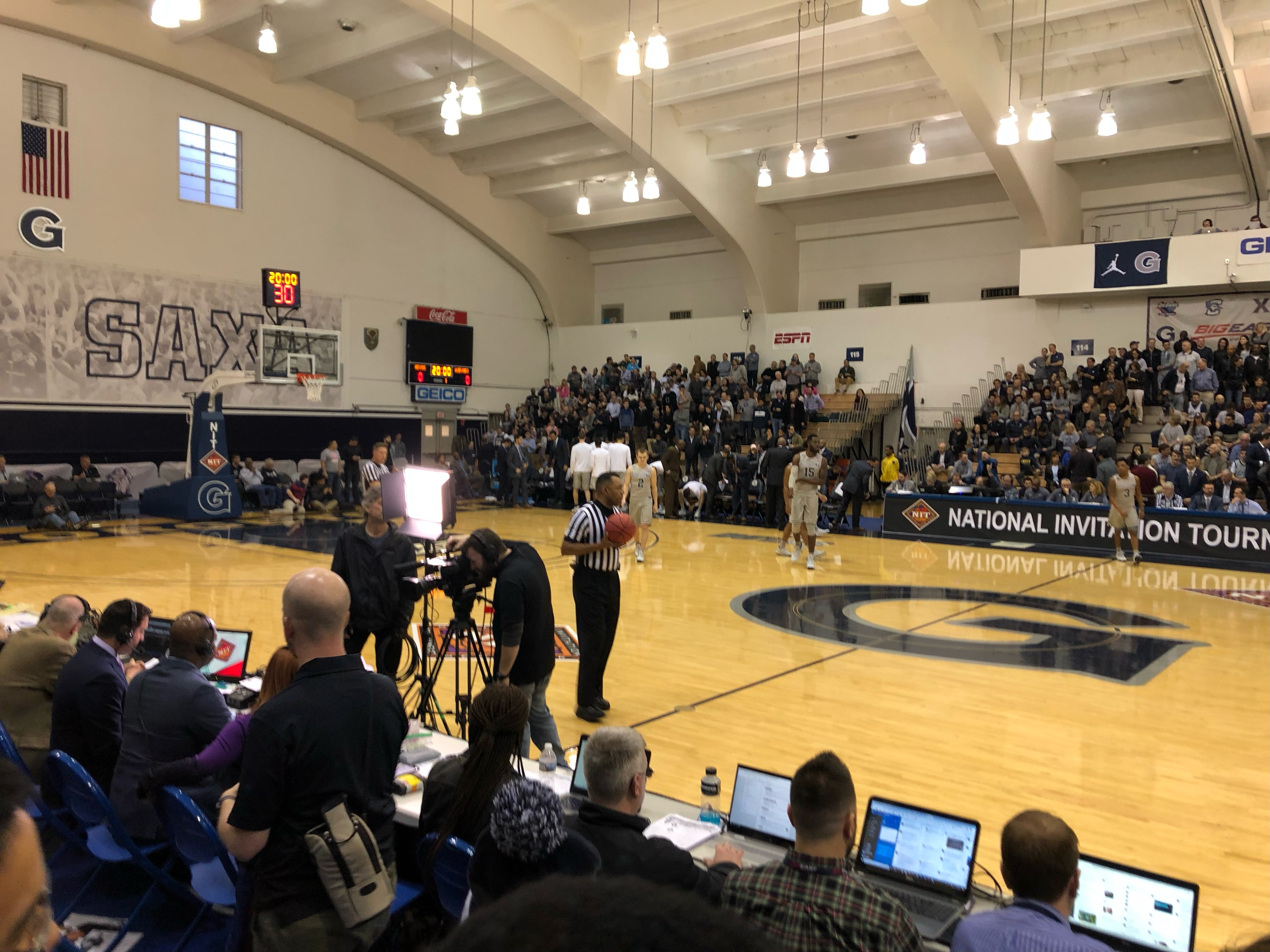
Just a few days earlier, Harvard had lost to Yale in the Ivy League Championship game—a game that would have given the Crimson a bid to the NCAA Tournament. Naturally, I felt it fitting to bring a “GO YALE” sign to the game. At one point, two Harvard players turned around and motioned to the sign, chuckling at the jab. They seemed to appreciate the dumb joke as much as I did. It felt good to feel that involved with the atmosphere at the game.
Capital One Arena is the fifth largest D1 college basketball arena among 358 schools. Its capacity of 20,356 for basketball games is nearly triple Georgetown’s entire undergraduate population of 7,357. It’s no secret that Georgetown often fails to fill even a quarter of the venue’s seats for home games in the past decade. In fact, the Hoyas only officially averaged 7,931 fans for the 2019-2020 season—the last full season played in front of fans—placing them at 66th in the country (and even that number feels pretty inflated). Georgetown has not had a sellout crowd since the Big East was reconfigured in 2013
Playing in large professional arenas is one of the biggest reasons the Big East was able to become the “power” conference it is today. Former Big East Commissioner Dave Gavitt is still revered for his leadership in getting Big East basketball in large professional arenas along the East Coast, thus propelling the conference to its current standing. Yet, today the college basketball landscape is far different than when Gavitt assumed the role of commissioner in 1979. Many programs are currently reevaluating whether higher capacity is always a good thing. Sure, you can have more fans at games, but often this comes at the very high cost of an exciting atmosphere.
The University of Texas, for instance, recently announced that they will be spending $338 million dollars to build a new arena that will have a capacity of 10,000, as compared to the 16,743 their current arena has. Of course, Big East programs like Villanova and St. John’s play their less-enticing games at their on-campus arenas to maximize home-court advantage and the playing atmosphere (even if KenPomeroy suggests that home-court advantage has nothing to do with how many fans are in attendance). Still, there are clear and obvious benefits to a more exciting home arena: prospective students will be more interested in attending the school, local fans will be more inclined to attend games, and TV networks will be more inclined to give those games prime-time opportunities. Even Patrick Ewing Jr. recently admitted that part of his decision to attend Indiana University rather than Georgetown University for his freshman year was driven by the better atmosphere at Assembly Hall than at Capital One Arena (then known as MCI Center).
Patrick Ewing Jr.’s comments on the quality of fan engagement aside, it is quite clear that Georgetown does have an attendance issue. At this point, I expect that many readers will ask, “Well, can these recent attendance lulls be attributed to how much the team has been losing?” To that, I would respond, “Of course!” Georgetown will definitely have more fans in the stands during periods when the team is performing better. We saw that in the late 2000s when the Hoyas made it to a Final Four. Yet, I still think that even if the team were a perennial Final Four contender (and that future feels hard to imagine at the moment), there should be serious consideration given to having a quality on-campus arena. Even Villanova, who many would now consider in the vicinity of a “blue blood,” finds value in playing the majority of their games at Finneran Pavilion, which opened its doors to a capacity of 6,501 after renovations in 2018.
Unfortunately, McDonough Arena’s capacity of around 2,500 fans is well-below what you would need to consistently host men’s basketball games, even when the team is in a skid. What may surprise you, though, is that McDonough Arena welcomed 4,620 back in 1982 when Georgetown hosted Missouri. Now, some fans have attributed this decrease in capacity to fewer bleachers in the second level of McDonough, but I would also argue that more lenient building regulations made it possible to cram 4,620 fans into the infrastructure in place. For instance, a 1970 article by the Montgomery College student newspaper The Spur reported that 7,000 people were crammed into McDonough to see the Grateful Dead perform live on-campus. The description of the concert sounds like it would certainly fail to meet current safety regulations: “They clambered in open windows, smashed closed ones, and shouted obscenities at the innocent guards. On the inside, many people nearly collapsed from the ninety-degree heat and 100% humidity, tried in vain to escape the unbearable discomfort. Despite their efforts, guards would not open any doors for fear of those outside charging inside.” In hindsight, we are perhaps fortunate that McDonough was never the scene of a tragedy resembling the 1989 Hillsborough Disaster. Thus, I have to imagine that even back in 1984, McDonough probably had a legal capacity that was at least within a thousand of what it is now. The Hoya also reported that the university suspended concerts indefinitely following the incident because “6,000 people attended the concert – 2,000 more than the fire regulations will permit.” Thus, it seems safe to assume that the capacity of McDonough was 4,000 at the time.
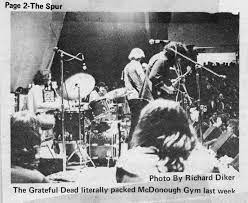
The discussion of renovating McDonough or building a new on-campus arena to increase capacity is not new by any means. Georgetown fans are acutely aware that there are few options to host home games outside of Capital One Arena. Entertainment and Sports Arena, for instance, is even further than Capital One Arena and only has a capacity of 4,200. Creative solutions, like the rumored purchase of the Key Bridge Marriott as a potential new home arena location, have also failed to pan out. This leaves the university in its current predicament where it must pay rent at Capital One Arena because there are not any better local options.
McDonough Arena may also become too small for Georgetown women’s basketball games as women’s basketball continues to grow. While Capital One Arena is the fifth largest arena in Division 1 basketball, McDonough is in the top 30 smallest D1 home basketball venues for both men and women. The addition of women’s basketball giant UConn has only accelerated the need for a larger home arena on the Hilltop. In fact, this season, the Georgetown women’s program announced that they would host the Huskies at Entertainment & Sports Arena. Unfortunately, the game has not yet happened due to COVID cases within the UConn program, but the fact that even the women’s program seems to be outgrowing McDonough remains true.
At this point, I hope to have effectively convinced you that Georgetown does in fact need a larger on-campus arena, ideally one with a capacity of at least 5,000 to function similarly to the Pavilion at Villanova or Carnesecca Arena at St. John’s.
The “2000 Plan,” named for the year it was conceptualized, was an idea to avoid challenging regulations that would come with expanding the current footprint of McDonough or building a new structure altogether. The Hoya wrote “Plans include renovating within the [McDonough Gymnasium] walls, rather than creating a new structure, significantly cutting costs… After turning the court 90 degrees, the plan is to dig down and build a bowl that will contain the court… adding up to somewhere between 6,000 and 7,000 seats.” The Hoya added that investigators felt this plan was possible because there were no pipes underneath the arena to cause issues. At the time, this plan was pitched as a “convocation center,” and the project with a $22 million projected cost (at the time) failed to come to fruition.
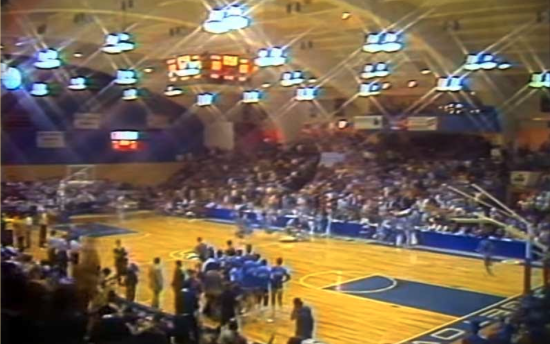
Georgetown’s strategic plan through 2036 does not include any renovations for McDonough, and this alone essentially leaves the 2000 plan dead in the water. Even if the university was intrigued by the idea, I doubt that it could justify the project over others that are currently in the works. Thus digging into the floor of McDonough seems to be an exciting but doubtful idea.
I would like to propose a plan that better fits the university’s priorities in 2022. Admittedly, this idea is pretty similar to the 2000 Plan with one clear differentiator: I would not propose to dig into the floor of the facility at all. It seems pretty clear that doing so may be too costly to justify given all of the infrastructure priorities of the school. Rather, I am proposing that the orientation of the bleachers and court be changed in such a way that could accommodate a larger crowd within the same exact footprint. Granted, this would require that new stands be built, but I imagine this would still be a far more cost-effective option than constructing a new arena from scratch.
What I have done is created a virtual model of McDonough with orientations of the court and potential bleachers to accommodate a larger capacity than the current model. In addition, I created a model of the court in its current orientation. By comparing the surface areas of the bleachers in these models with that of McDonough in its current form, I have approximated the capacity of each of these new orientations. What I found is promising, and gives reason to believe that new bleachers in a more efficient orientation may be enough on their own to make McDonough Arena a long-lasting home venue for men’s basketball games.
Below are the best three proposed models that I discovered as well as the standard model of McDonough in its current form. There are also videos of each 3-D model from different angles. Additionally, there is an appendix that follows if you are interested in how the models came to be. Please bear in mind that I am just a student in the SFS playing around in SketchUp. I have done my best to consider basic architectural principles but have likely made errors as well. These are also approximations; my main goal for these models is to help visualize how creative renovations could increase capacity at McDonough.
McDonough Arena in its Current Form
Capacity: 2500
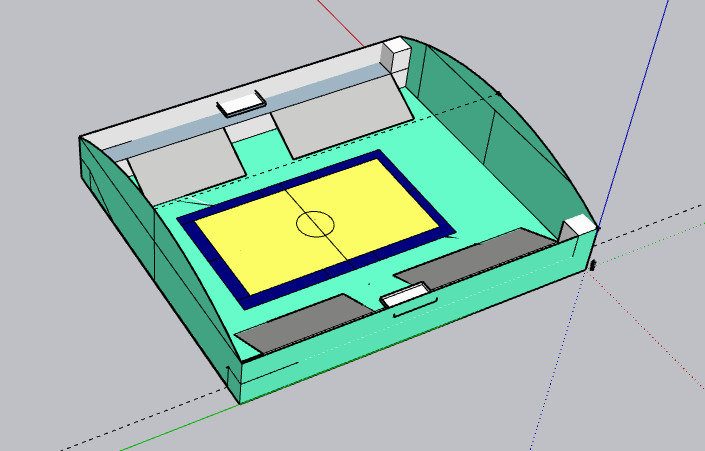
Here is the model of McDonough Arena as it currently looks. The court is oriented from north to south and sets of stands flank the court on the east and west sides of the space. I made the bleachers on the lower level wider than they currently are (there is more space between sets of bleachers in reality) to make up for the fact that the smaller second-level bleachers on the west side are omitted. Though capacity is limited in this format, the seating does feel like a natural fit for the space.
McDonough Arena A: The Horseshoe
Approximate Capacity: 5,600

The approach to changing the layout of McDonough maintains the current orientation of the court and shifts the west baseline of the court along the west wall of McDonough. The north and south bleachers take advantage of the higher north and south walls while the east bleachers extend up to the camera box on the east side. This new set-up would likely contain sound incredibly well and generate a raucous crowd. It also has the added benefit of keeping the court centered on the east-west axis so that that TV box as well as the second level on the west side could be usable. The lower level doors on the west of the gymnasium could also be used for fans to access seating sections. I believe that this is the most exciting way of renovating the bleachers because you could fit the largest capacity of any model, 5,600. Unfortunately, this comes with a massive caveat. While the eastern bleacher has a very realistic angle of 20 degrees. The northern and southern bleachers have far steeper bleachers that clock in at nearly 45 degrees. While 45 degrees may be common at Latin American stadiums, many larger professional American arenas do not venture about 36 degrees, according to an article by the New York Post. Because most college arenas do not publish how steep their seating is, I have decided to assume a maximum angle of 45 degrees with the understanding that all bleacher heights could be lowered to have less steep bleachers, if necessary.
McDonough Arena B: Simple 90 Degree Court Rotation
Approximate Capacity: 4,800
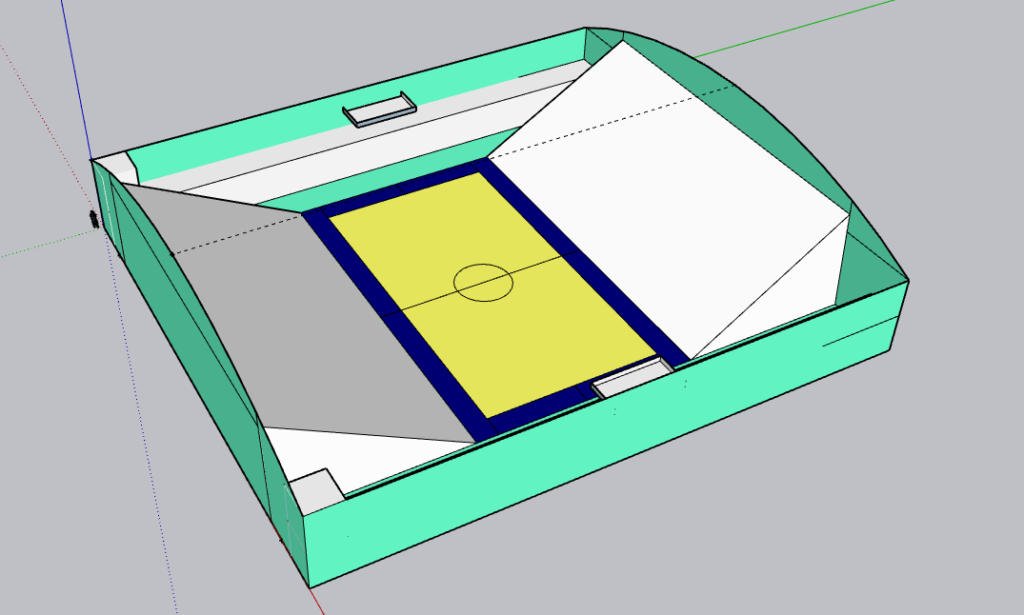
This bleacher renovation also rotates the court 90 degrees and takes full advantage of the higher north/south walls to increase capacity. The court is rotated 90 degrees but kept central to the McDonough Arena floor. Stands then extend fully out to the walls on the north/south sides. In this version, there is still the potential to take advantage of most of the second level on the east and west sides of the arena. The lower side doors on the east and west sides could also be used for access to the gymnasium area. A TV box would need to be installed among the bleachers if this orientation were to be implemented. The new capacity of 4,800 also puts this squarely in the reasonable ballpark of renovations. It also maintains fans on both sides of the court. These bleachers are a very realistic 34 degrees.
McDonough Arena C: Simple 90 Degree Court Rotation with 45 Degree Bleachers
Approximate Capacity: 4,320
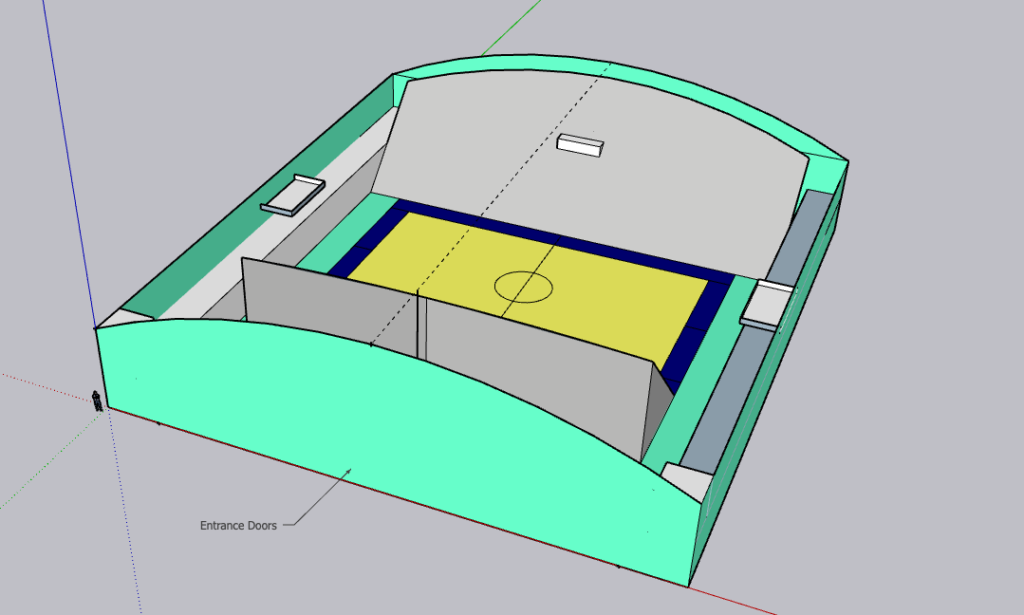
This model is very similar to the previous model except that this model has bleachers that are angled at 45 degrees. As has been noted, it’s entirely possible that bleachers this steep would not meet current architectural standards in the United States, but there does seem to be enough precedence of arenas with this steep of an angle to include the model. These steeper bleachers would limit capacity to about 4,320, but they would also allow for a space when you enter the gymnasium part of the building that could be used for a team store, concessions, or otherwise. If either of the first two models did not allot McDonough enough space for other necessary services (that could not be adequately met by the current lobby area, ticket offices, and outdoor space), this may be the next most ideal model. Space on the second levels on both sides would still have visible sightlines to the court, as well.
Georgetown basketball needs a realistic option for a home on campus, and each of these renovations provides a cost-effective way of delivering that. A functional McDonough home arena would also quickly be vaulted to one of the most historic venues in the sport.




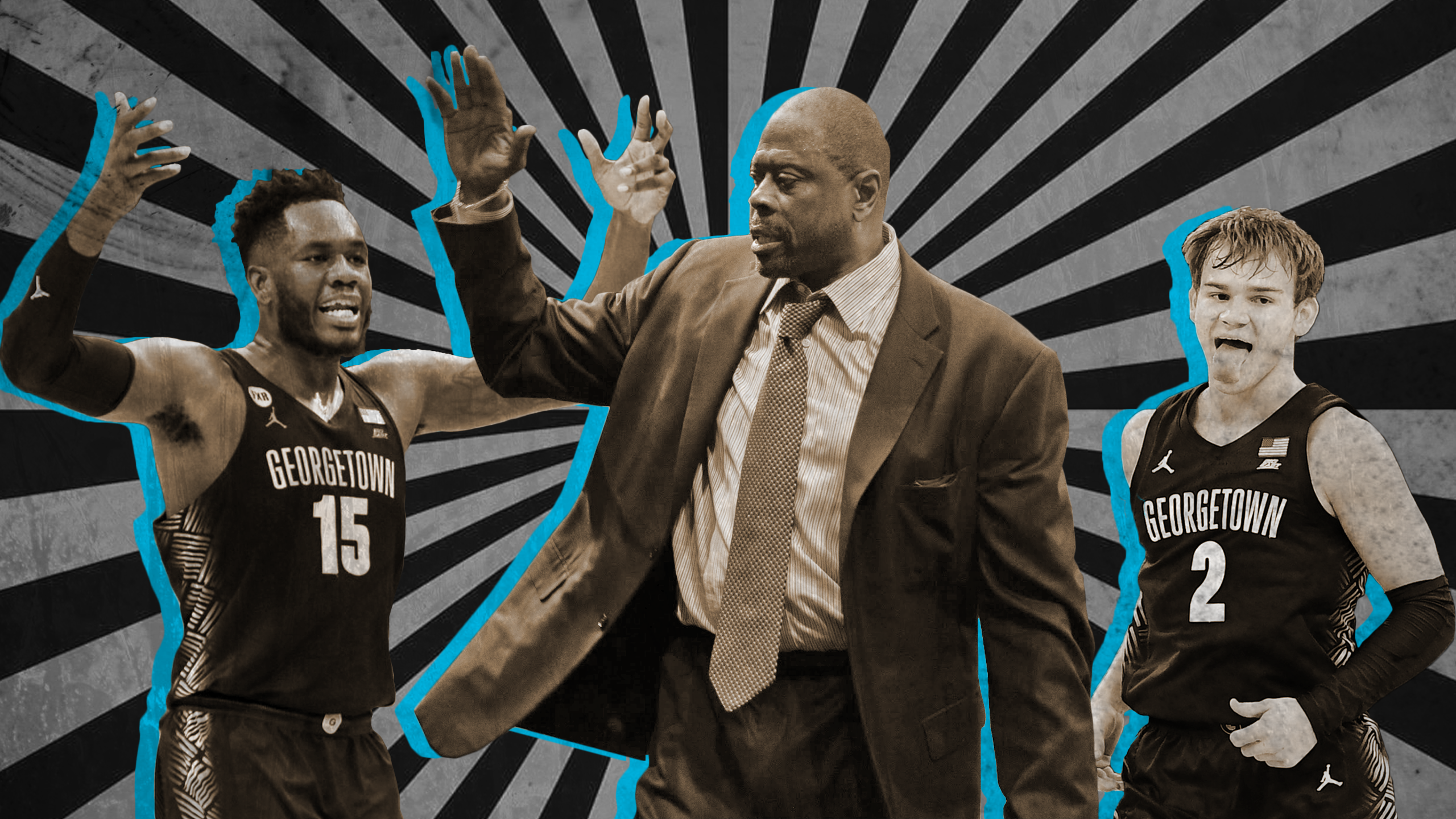
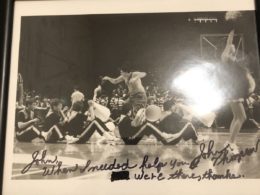
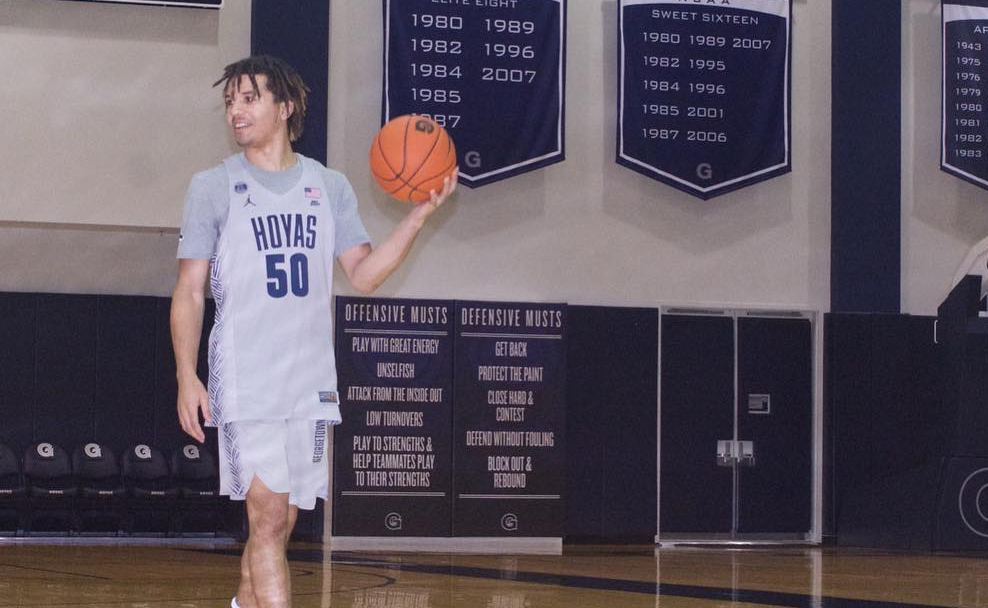
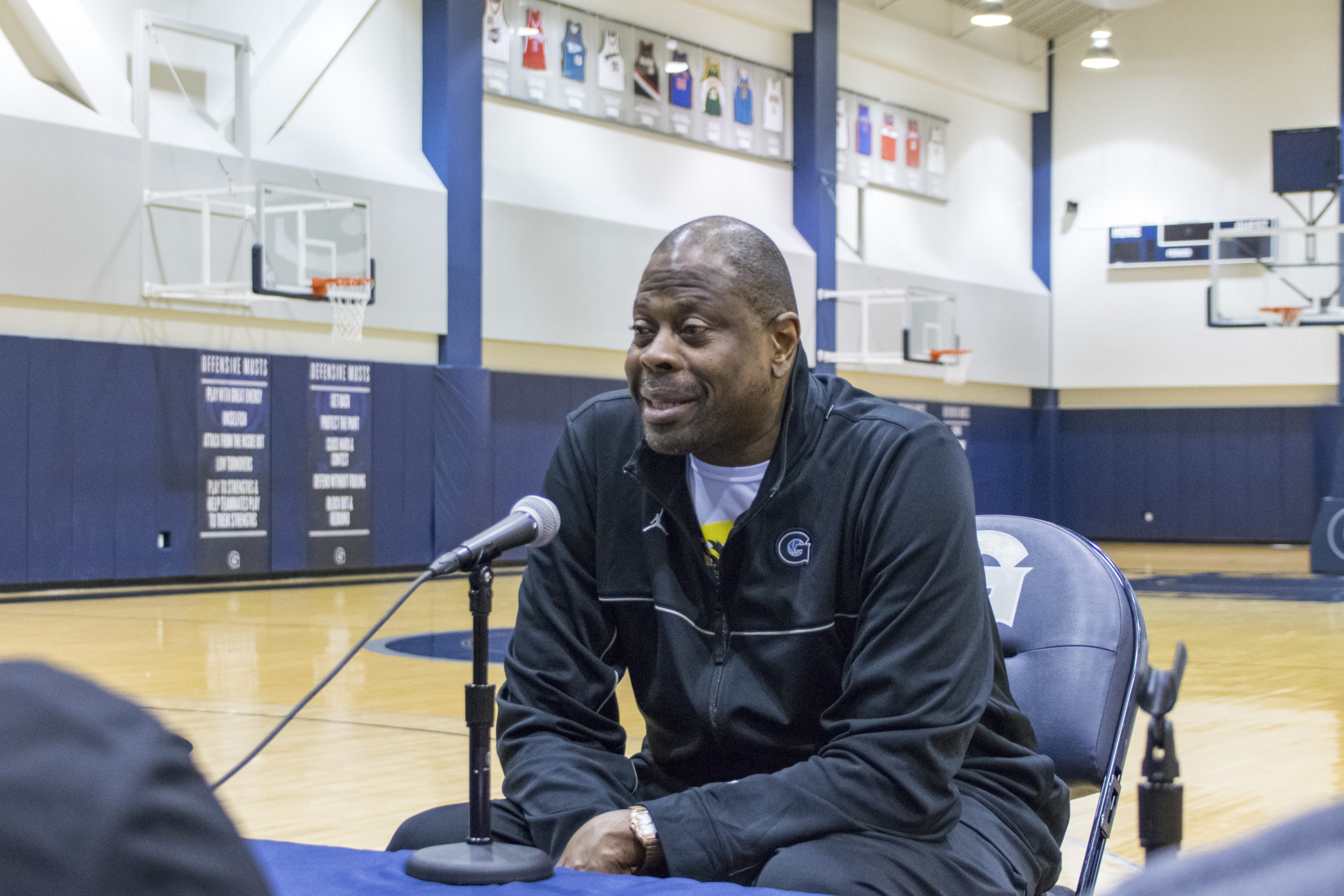
These are awesome ideas. I’m not a G’Town alum. But as a DC native, I’ve been a huge fan my entire life. This is something that’s been on my mind for a while as well. I started doing some sketches a few months ago, and my idea was almost identical to your “Arena A”. But I did not think to turn the court 90 degrees. That’s definitely the best idea I’ve heard thus far. This is definitely needed to create a better home court environment.
Graduated in 1972, just as Big John was coming in. For 4 years I’d walk from my dorm to McDonough to watch my Hoyas. Also to see Traffic, the Who, Ike and Tina and the Dead and others. A representative on campus McDonough is every bit as important as the Library
I applaud the thinking and strategizing you have invested in this — very nicely done! Your plan accomplishes much, if not all, of what a vision for a home court facility should: allows purists and nostalgia buffs to see games at McDonough; stays within the footprint of the present day building and employs a smart floor and seating plan that will increase capacity and is significantly more economical than the major projects other colleges and universities are planning and building; and brings events back on campus and gives our teams and fans a true identity in line with other Georgetown… Read more »